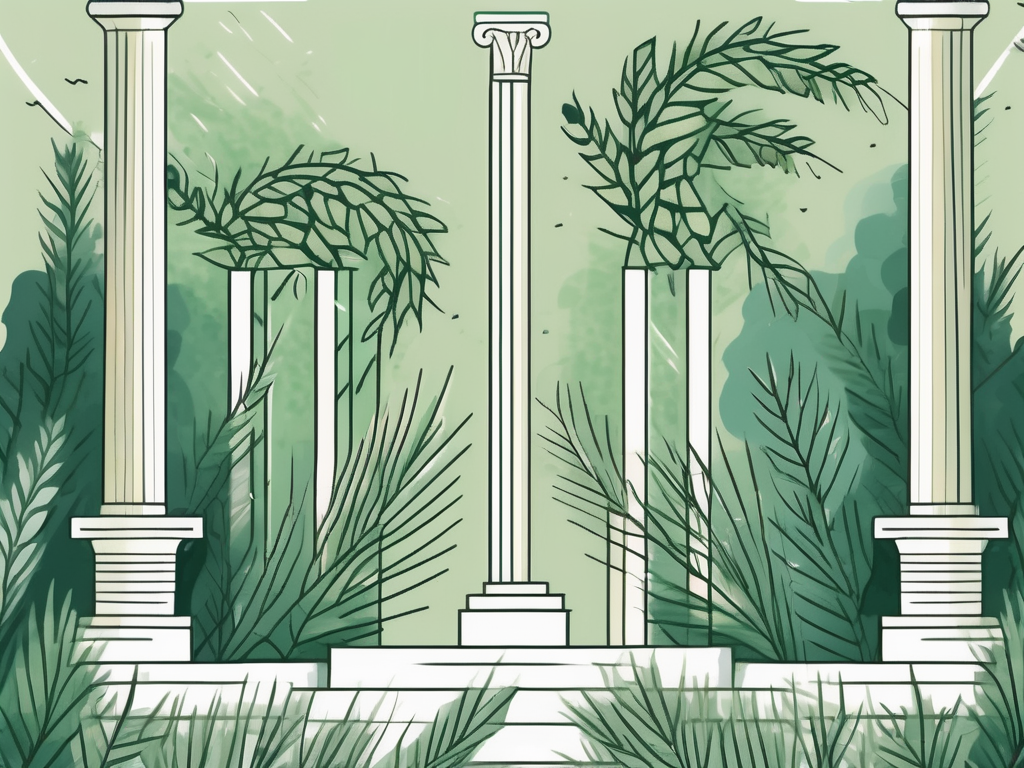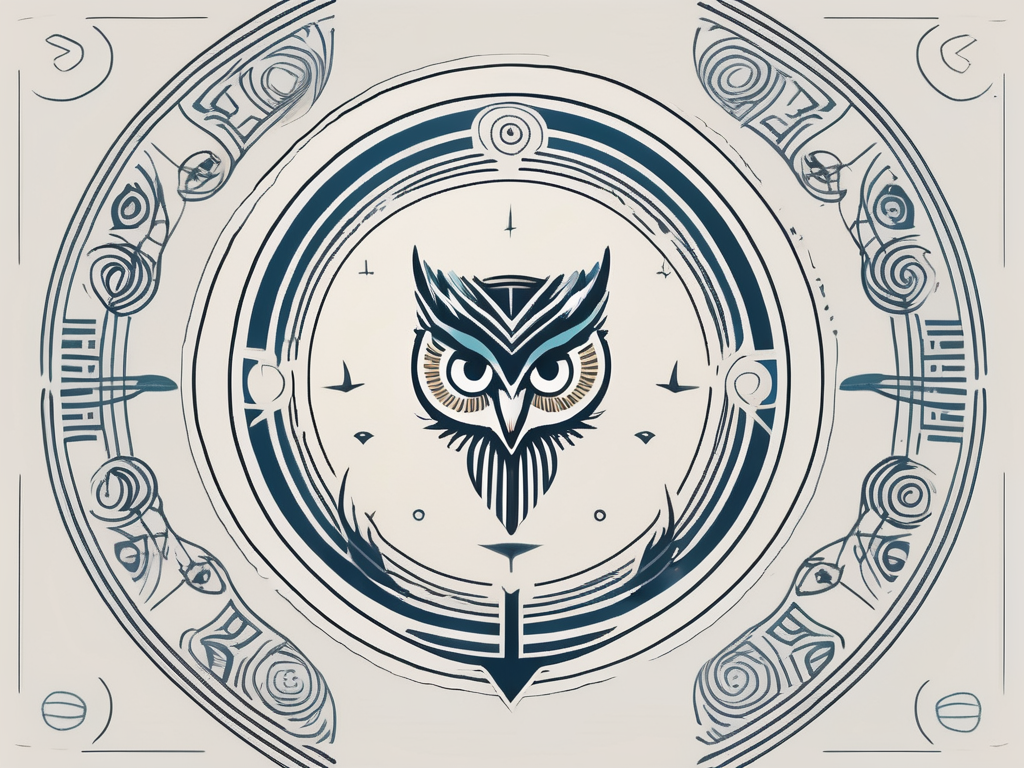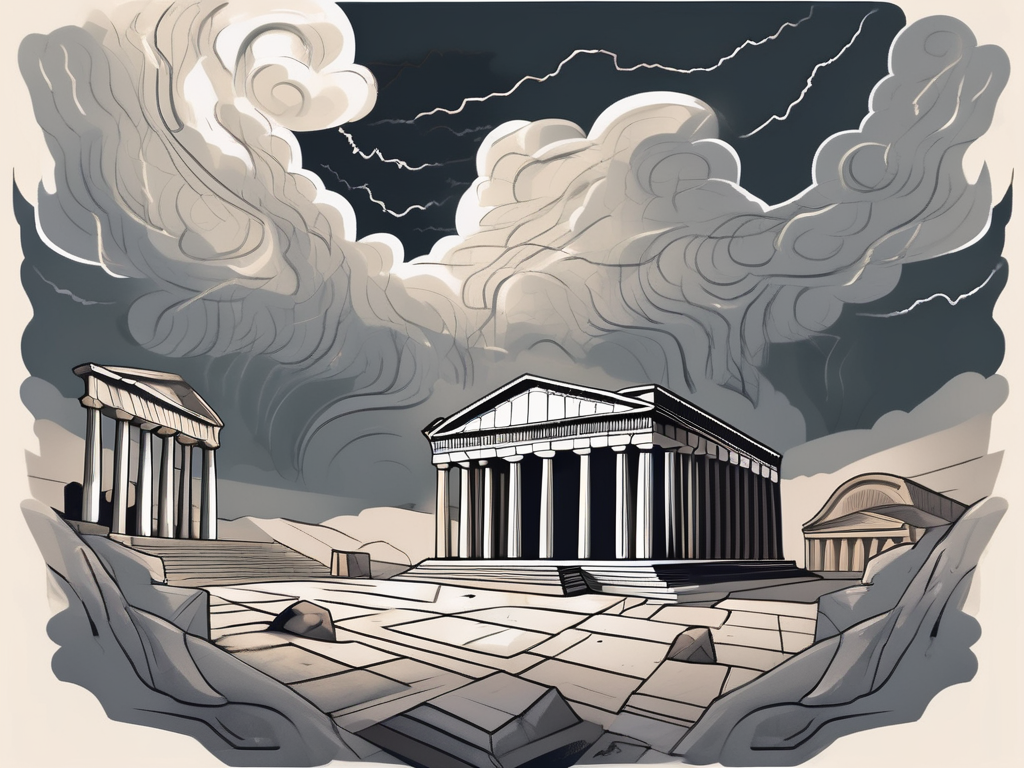Welcome to the fascinating world of Greek mythology, where gods and goddesses reign supreme. One of the most enigmatic figures in this ancient pantheon is Persephone, the goddess of spring and the underworld. In this article, we will delve into the myth of Persephone, exploring her dual nature, her significance in Greek mythology, and her influence on ancient Greek culture and religion. We will also examine how Persephone continues to captivate modern audiences through literature, art, and the exploration of her relevance in today’s world.
Understanding Persephone: The Goddess of Spring and the Underworld
Persephone, the daughter of Zeus and Demeter, is a complex figure with a dual nature – she is both the goddess of spring, bringing joy and renewed life to the earth, and the queen of the underworld, residing alongside her husband, Hades. Her story is a tale of contrasts, embodying the cyclical nature of life and the transitions between the realms of the living and the dead.
In Greek mythology, Persephone’s abduction by Hades serves as the catalyst for her dual role. Let’s explore this intriguing tale, which has captured the imagination of countless generations.
The Dual Nature of Persephone
Persephone’s unique status as both the goddess of spring and queen of the underworld represents the connection between life and death, growth and decay. As the goddess of spring, she brings blooming flowers, vibrant colors, and the promise of new beginnings. Her arrival marks the end of the harsh winter and the beginning of a season filled with warmth and vitality.
However, when Persephone descends to the underworld, the earth mourns as winter sets in, reflecting her absence. The once lush landscapes turn barren, and the vibrant colors fade away. The world becomes a cold and desolate place, mirroring the sorrow felt by her mother, Demeter, as she longs for her daughter’s return.
This duality showcases the depth and complexity of Persephone’s character. She embodies the ever-changing nature of life, reminding us that joy and sorrow, life and death, are intertwined and inseparable.
The Significance of Persephone in Greek Mythology
Persephone’s story holds deep symbolism within Greek mythology. Her abduction by Hades symbolizes the cycle of the seasons, as her mother Demeter mourns her absence, causing the earth to go barren. This narrative explains the changing seasons and the idea of the earth’s fertility being tied to Persephone’s presence.
Additionally, Persephone’s journey into the underworld represents the universal theme of transformation and the exploration of the afterlife. As she descends into the depths of the underworld, she undergoes a profound metamorphosis, transitioning from the bright and vibrant goddess of spring to the somber and powerful queen of the underworld.
Her role as a mediator between the living and the dead highlights the cyclical nature of existence and the eternal mysteries of the underworld. Persephone’s presence in the underworld brings comfort and solace to the souls of the deceased, offering them a sense of hope and renewal even in the darkest of realms.
Persephone’s story has captivated the hearts and minds of countless individuals throughout history. It serves as a reminder that life is a journey filled with both light and darkness, and that even in the depths of despair, there is always the potential for growth and transformation.
The Myth of Persephone: A Detailed Analysis
Let’s delve deeper into the myth of Persephone by examining the key elements that make up her captivating story. From her abduction by Hades to the pivotal role played by her mother Demeter and the consequences of the infamous pomegranate seeds, each aspect adds layers of meaning and intrigue to the narrative.
The Abduction by Hades
One of the most well-known aspects of Persephone’s myth is her abduction by Hades, the ruler of the underworld. Accounts vary, with some portraying it as a violent act, while others depict a consensual agreement. Regardless of the interpretation, this event serves as the catalyst for Persephone’s transformation and her initiation into the realm of the dead.
As the story goes, Persephone was innocently picking flowers in a meadow when the ground beneath her feet suddenly split open. Before she could react, Hades emerged from the depths of the earth, his chariot drawn by terrifying black horses. With a swift and decisive motion, he snatched Persephone and whisked her away to his dark and somber realm.
Persephone’s abduction represents a turning point in her life. It marks the end of her innocence and the beginning of her journey into the underworld. In this realm of shadows and spirits, she would undergo a profound transformation, becoming the Queen of the Underworld and a symbol of both life and death.
The Role of Demeter in Persephone’s Myth
Demeter, Persephone’s mother and the goddess of agriculture and fertility, plays a crucial role in the myth. Devastated by her daughter’s disappearance, Demeter’s grief causes the earth to wither and die. In her search for Persephone, she journeys across the land, refusing to let nature thrive until her daughter is returned to her. This maternal love and determination highlights the power of a mother’s bond and the lengths she will go to protect her child.
Demeter’s anguish is palpable as she wanders the earth, her once vibrant and lush domain now reduced to a barren wasteland. The crops wither, the rivers run dry, and the animals languish in despair. Her sorrow resonates with all living beings, as they too feel the impact of Persephone’s absence.
As Demeter traverses the land, she encounters various deities and mortal beings, seeking their assistance in finding her beloved daughter. She pleads with Zeus, the king of the gods, to intervene and bring Persephone back to her. However, Zeus, torn between his brother Hades and his sister Demeter, struggles to find a resolution that satisfies both parties.
Demeter’s relentless pursuit of Persephone is a testament to a mother’s unwavering love. She refuses to give up, even in the face of immense despair and hopelessness. Her determination serves as a reminder that love knows no bounds and that a mother’s love can move mountains.
The Pomegranate Seeds: Symbolism and Consequences
While in the underworld, Persephone is tempted by Hades with pomegranate seeds, the consumption of which further cements her ties to the realm of the dead. As a result, she must spend a portion of every year in the underworld, which explains the cycle of seasons and the transition into winter. This event underscores the grave consequences of choices made and the eternal bond between the living and the dead.
The pomegranate seeds, with their vibrant red hue and sweet taste, represent the allure of the underworld. They symbolize the temptation that Persephone faces and the choices she must make. By consuming the seeds, she willingly binds herself to the realm of Hades, ensuring that she will forever be connected to the world of shadows and spirits.
Persephone’s annual return to the underworld signifies the transition from life to death and the changing of seasons. As she descends into the depths, the earth mourns her absence, and winter descends upon the land. The barrenness of the winter months reflects the sorrow and longing felt by Demeter, as she awaits her daughter’s return.
However, as spring arrives, Persephone emerges from the underworld, bringing with her the promise of new life and growth. The earth rejoices, bursting forth with vibrant colors and renewed energy. This cyclical pattern of death and rebirth mirrors the eternal cycle of life itself, reminding us of the interconnectedness of all things.
In conclusion, the myth of Persephone is a captivating tale filled with rich symbolism and profound meaning. From her abduction by Hades to the unwavering love of her mother Demeter and the consequences of the pomegranate seeds, each element adds depth and complexity to the narrative. It is a story that explores themes of transformation, love, and the delicate balance between life and death.
Persephone’s Influence on Ancient Greek Culture and Religion
Beyond her myth, Persephone’s story has had a lasting impact on ancient Greek culture and religion. Let’s explore how her presence was felt in religious practices and the mysterious rituals known as the Eleusinian Mysteries.
Persephone’s Impact on Greek Religious Practices
Persephone, as both the goddess of spring and the queen of the underworld, held a significant role in ancient Greek religious practices. Her importance was felt throughout various festivals and rituals, as her dual nature embodied the cycle of life and death, renewal and decay. Worshippers sought her blessings for bountiful harvests and protection in the afterlife.
The Eleusinian Mysteries: A Ritual for Persephone
Central to Persephone’s influence on Greek religion were the Eleusinian Mysteries, a secret ritual held in honor of Demeter and Persephone. These mysteries offered initiates the chance to experience the transformative journey of Persephone herself, unlocking deeper insights into the mysteries of life and the afterlife. The rituals symbolized the cyclical nature of existence and the hope for understanding the divine realms.
Persephone in Modern Interpretations and Adaptations
The captivating myth of Persephone continues to inspire modern interpretations and adaptations. From literature to art, let’s explore how Persephone’s story resonates with contemporary audiences.
Persephone’s Representation in Literature and Art
Persephone’s myth has found new life in literature and art, with numerous authors and artists drawing inspiration from her captivating story. Whether it’s exploring her dual nature, the power dynamics in the myth, or the themes of transformation and resilience, Persephone’s allure continues to captivate audiences around the world.
The Modern Relevance of Persephone’s Myth
Beyond its artistic appeal, Persephone’s myth holds relevance in today’s world. Themes of power, resilience, and the exploration of life’s mysteries continue to resonate with individuals seeking to navigate their own journeys. Persephone’s story serves as a reminder that even in the darkness, there is always the potential for growth and renewal.
Debunking Common Misconceptions About Persephone
With any myth, there are bound to be misconceptions and misinterpretations. Let’s debunk some common misconceptions surrounding Persephone and challenge preconceived notions about her character.
Challenging the Victim Narrative
Often portrayed as a helpless victim in popular culture, Persephone’s story challenges this simplistic narrative. While her abduction was a pivotal event, focusing solely on her victimhood undermines her agency, resilience, and transformation throughout the myth. It is essential to recognize her multidimensionality and the strength she embodies as she navigates both the realms of the living and the dead.
Persephone as a Symbol of Power and Resilience
Instead of limiting Persephone to a passive victim, it is crucial to acknowledge her as a symbol of power and resilience. Her journey into the underworld and her role as the queen highlight her inner strength and the ability to navigate challenging circumstances. Persephone exemplifies the transformative power that lies within each individual, reminding us that we have the capacity to endure and emerge stronger from the darkest of experiences.
In conclusion, the myth of Persephone unravels the multi-layered complexities of this enigmatic Greek goddess. From her dual nature to her significance in Greek mythology, Persephone continues to captivate audiences across the centuries. Her story resonates not only in ancient times but also in modern interpretations and our exploration of life’s mysteries. So, let us embrace Persephone’s myth as we navigate our own journeys, drawing inspiration from her resilience, power, and the eternal cycles of life and death that she embodies.












